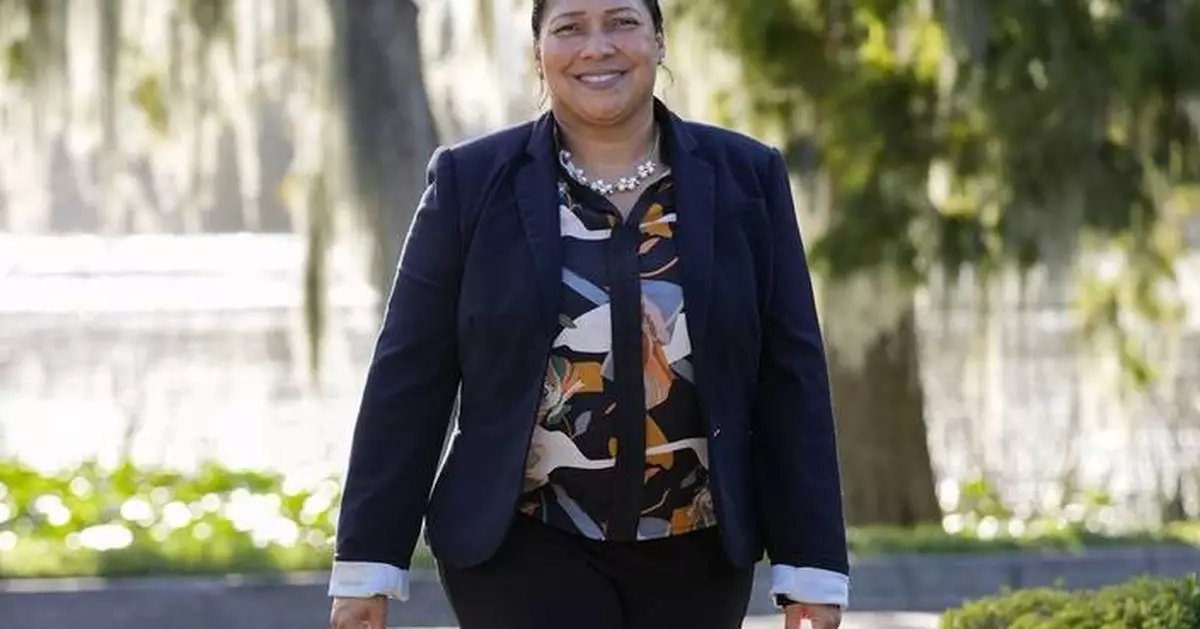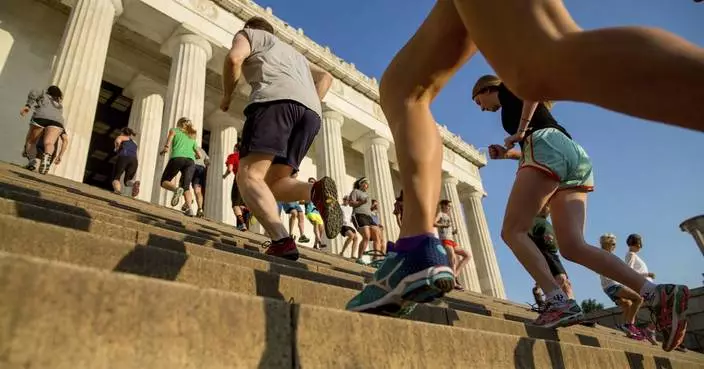HAINES CITY, Fla. (AP) — Not long ago, Polk County’s biggest draw was citrus instead of people. Located between Tampa and Orlando, Florida’s citrus capital produces more boxes of citrus than any other county in the state and has devoted tens of thousands of acres to growing millions of trees.
But last year, more people moved to the county than to any other in the United States, almost 30,000.
Bulldozed citrus groves in recent years made way for housing and big box stores that could one day merge the two metropolitan areas into what has half-jokingly been dubbed, “Orlampa.”
The migration — and property sprawl — reflects a significant kind of growth seen all over the country this decade: the rise of the far-flung exurbs.
Outlying communities on the outer margins of metro areas — some as far away as 60 miles (97 kilometers) from a city’s center — had some of the fastest-growing populations last year, according to the U.S. Census Bureau. Those communities are primarily in the South, like Anna on the outskirts of the Dallas-Fort Worth metro area; Fort Mill, South Carolina, outside Charlotte, North Carolina; Lebanon outside Nashville; and Polk County’s Haines City.
For some residents, like Marisol Ortega, commuting to work can take up to an hour and a half one-way. But Ortega, who lives in Haines City about 40 miles (64 kilometers) from her job in Orlando, says it’s worth it.
“I love my job. I love what I do, but then I love coming back home, and it’s more tranquil,” Ortega said.
The rapid growth of far-flung exurbs is an after-effect of the COVID-19 pandemic, according to the Census Bureau, as rising housing costs drove people further from cities and remote working allowed many to do their jobs from home at least part of the week.
Polk County’s Hispanic population has grown from one-fifth to more than one-quarter of the overall population over the past five years, driven by Puerto Rican migration from the island after 2017’s Hurricane Maria and then from New York during the pandemic.
The county has grown more diverse with the share of non-Hispanic white residents dropping from 61% to 54%, and it has also gotten more educated and wealthier, according to the Census Bureau. Despite the influx of new people, the county’s Republican leanings have remained relatively unchanged.
Yeseria Suero and her family moved from New York to Polk County at the start of the decade after falling in love with the pace of life and affordability during a visit. Still, there were some cultural adjustments: restaurants closing early, barbecue and boiled peanuts everywhere, strangers chatting with her at the grocery store. Suero is now involved with the tight-knit Hispanic community and her two boys are active in sports leagues.
“My kids now say, ‘Yes, ma’am,’” she said.
Recent hurricanes and citrus diseases in Florida also have made it more attractive for some Polk County growers to sell their citrus groves to developers who build new residences or stores.
Over the past decade, citrus-growing there declined from 81,800 acres (33,103 hectares) and almost 10 million trees in 2014 to 58,500 acres (23,674 hectares) and 8.5 million trees in 2024, according to federal agricultural statistics.
“It hasn’t been a precipitous conversion of citrus land for growth,” said Matt Joyner, CEO of Florida Citrus Mutual, a grower’s group. “But certainly you see it in northern, northeastern Polk.”
Anna, Texas, more than 45 miles (72 kilometers) north of downtown Dallas, is seeing the same kind of migration.
It was the fourth-fastest growing city in the U.S. last year and its population has increased by a third during the 2020s to 27,500 residents. Like Polk County, Anna has gotten a little older, richer and more racially diverse. Close to 3 in 5 households have moved into their homes since 2020, according to the Census Bureau.
Schuyler Crouch, 29, and his wife wanted to buy a house in a closer-in exurb like Frisco, where he grew up, so they could settle down and start a family. But prices there have skyrocketed because of population growth.
In Anna, they fell in love last year with a house that was more reasonably priced. They both work in Frisco, about 30 miles (48 kilometers) away, and it has become their go-to for eating out or entertainment instead of downtown Dallas, even though not long ago Frisco itself was considered a far-flung outpost of the metro area.
Still, Crouch said he has noticed the exurbs keep getting pushed further north as breakneck growth makes affordable housing out of reach in neighborhoods once considered on the fringes of the metro area.
“The next exurb we are going to be living in is Oklahoma,” he joked.
Follow Mike Schneider on the social platform X: @MikeSchneiderAP.
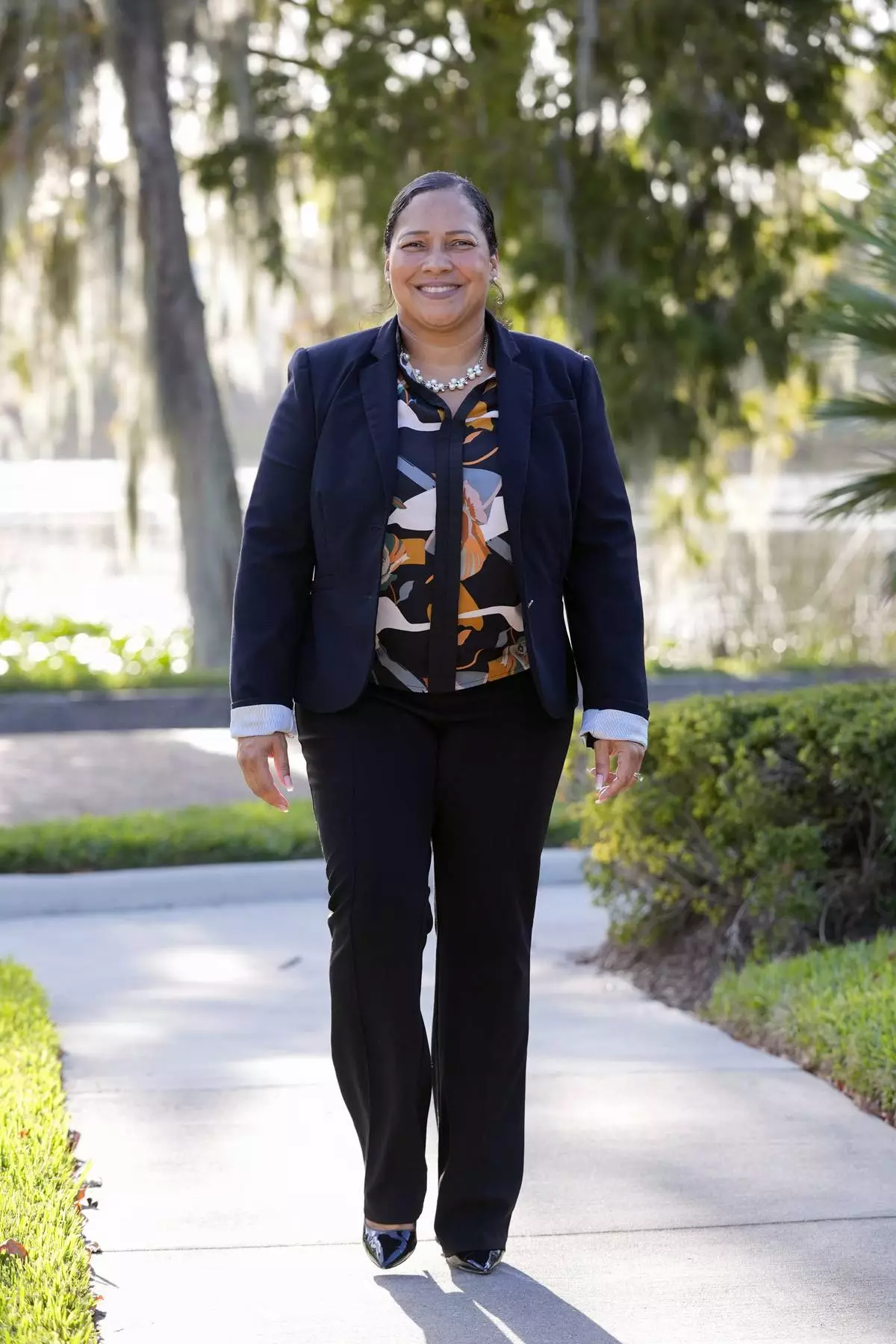
Marisol Ortega, a Polk County resident that commutes to her job in Orlando walks at a park Thursday, Nov. 14, 2024, in Orlando, Fla. (AP Photo/John Raoux)
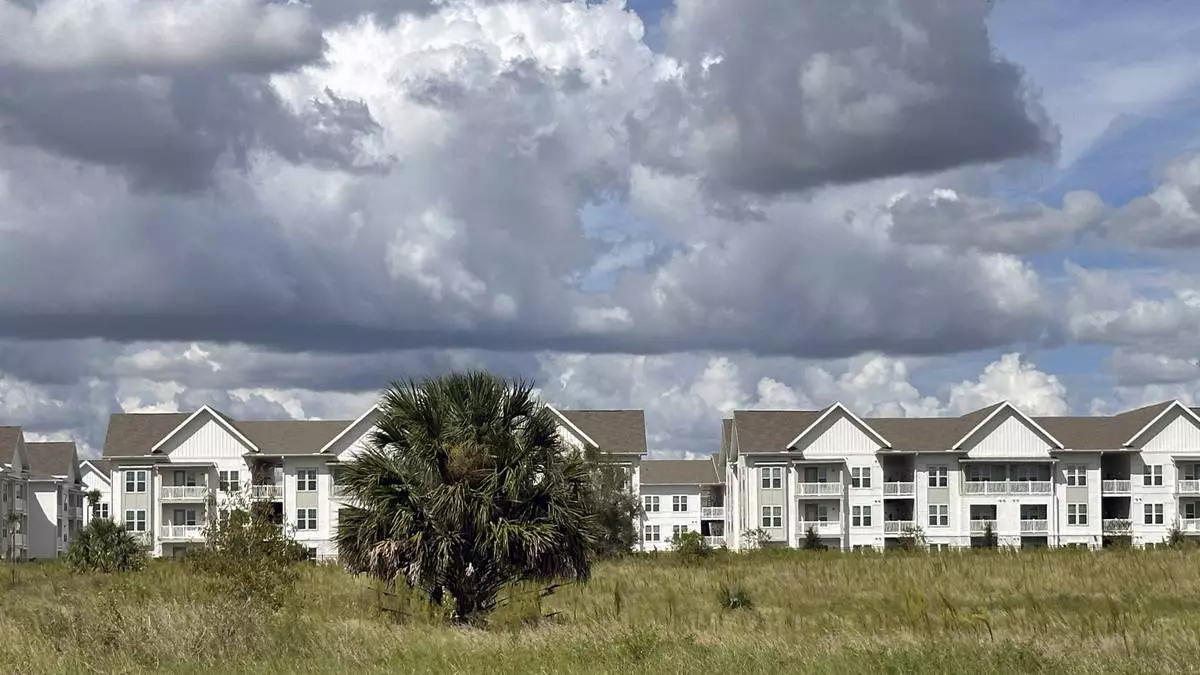
The newly-constructed The Brightly Apartments rises from what was formally a citrus grove nearby Haines City, Florida Saturday, Oct. 5, 2024. (AP Photo/Mike Schneider)
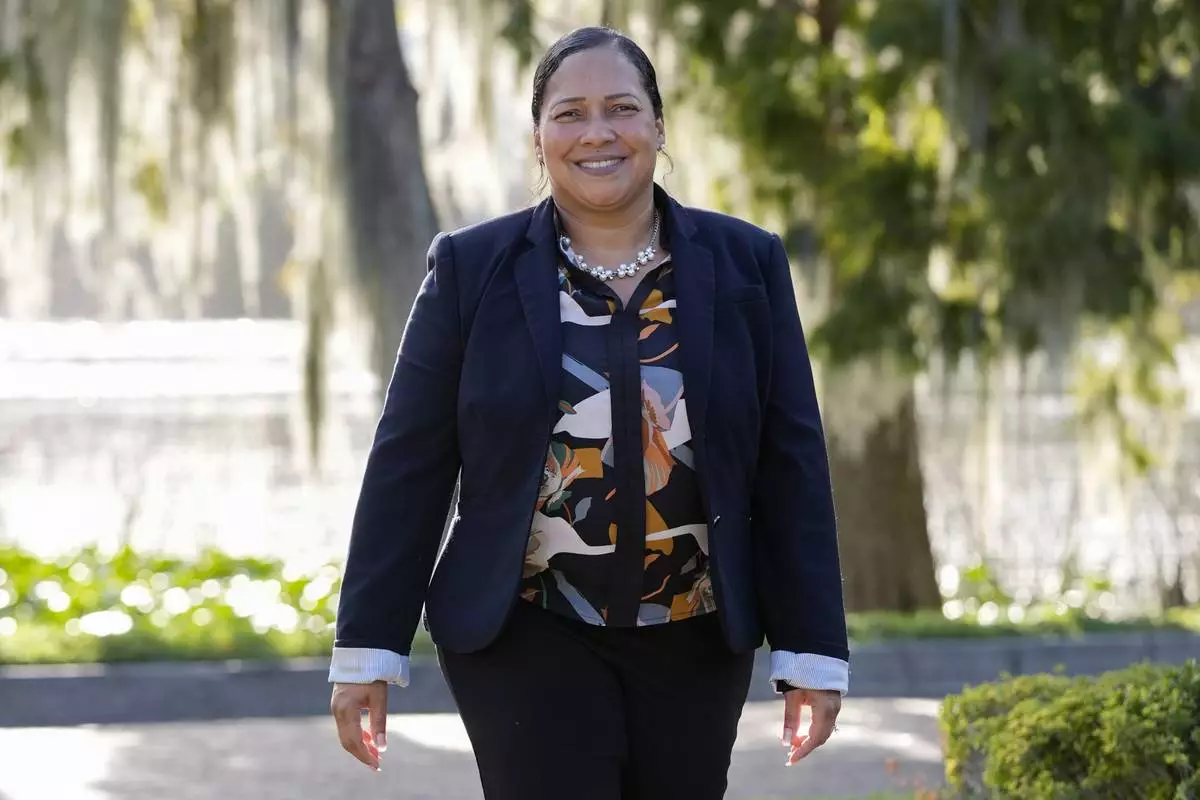
Marisol Ortega, a Polk County resident that commutes to her job in Orlando walks at a park Thursday, Nov. 14, 2024, in Orlando, Fla. (AP Photo/John Raoux)
MINNEAPOLIS (AP) — On the last night of their lives, Jagdish Patel, his wife and their two young children tried to slip into the U.S. across a near-empty stretch of the Canadian border.
Wind chills reached minus 36 Fahrenheit (minus 38 Celsius) that night in January 2022 as the family from India set out on foot to meet a waiting van. They walked amid vast farm fields and bulky snowdrifts, navigating in the black of an almost-moonless night.
The driver, waiting in northern Minnesota, messaged his boss: “Make sure everyone is dressed for the blizzard conditions, please.”
Coordinating things in Canada, federal prosecutors say, was Harshkumar Patel, an experienced smuggler nicknamed “Dirty Harry.” On the U.S. side was Steve Shand, the driver recently recruited by Patel at a casino near their Florida homes, prosecutors say.
The two men, whose trial is scheduled to start Monday, are accused of being part of a sophisticated human smuggling operation feeding a fast-growing population of Indians living illegally in the U.S. Both have pleaded not guilty.
Over the five weeks the two worked together, documents filed by prosecutors allege they spoke often about the bitter cold as they smuggled five groups of Indians over that quiet stretch of border.
“16 degrees cold as hell,” Shand messaged during an earlier trip. “They going to be alive when they get here?”
On the last trip, on Jan. 19, 2022, Shand was to pick up 11 more Indian migrants, including the Patels. Only seven survived.
Canadian authorities found the Patels later that morning, dead from the cold.
In Jagdish Patel's frozen arms was the body of his 3-year-old son, Dharmik, wrapped in a blanket.
The narrow streets of Dingucha, a quiet village in the western Indian state of Gujarat, are spattered with ads to move overseas.
“Make your dream of going abroad come true,” one poster says, listing three tantalizing destinations: “Canada. Australia. USA.”
This is where the family’s deadly journey began.
Jagdish Patel, 39, grew up in Dingucha. He and his wife, Vaishaliben, who was in her mid-30s, lived with his parents, raising their 11-year-old daughter, Vihangi, and Dharmik. (Patel is a common Indian surname and they are unrelated to Harshkumar Patel.) The couple were schoolteachers, local news reports say.
The family was fairly well off by local standards, living in a well-kept, two-story house with a front patio and a wide veranda.
“It wasn’t a lavish life,” said Vaibhav Jha, a local reporter who spent days in the village. “But there was no urgent need, no desperation.”
Experts say illegal immigration from India is driven by everything from political repression to a dysfunctional American immigration system that can take years, if not decades, to navigate legally.
But much is rooted in economics, and how even low-wage jobs in the West can ignite hopes for a better life.
Those hopes have changed Dingucha.
Today, so many villagers have gone overseas — legally and otherwise — that blocks of homes stand vacant and the social media feeds of those who remain are filled with old neighbors showing off houses and cars.
That drives even more people to leave.
“There was so much pressure in the village, where people grew up aspiring to the good life,” Jha said.
Smuggling networks were glad to help, charging fees that could reach $90,000 per person. In Dingucha, Jha said, many families afforded that by selling farmland.
Satveer Chaudhary is a Minneapolis-based immigration attorney who has helped migrants exploited by motel owners, many of them Gujaratis.
Smugglers with ties to the Gujarati business community have built an underground network, he said, bringing in workers willing to do low- or even no-wage jobs.
“Their own community has taken advantage of them,” Chaudhary said.
The pipeline of illegal immigration from India has long existed but has increased sharply along the U.S.-Canada border. The U.S. Border Patrol arrested more than 14,000 Indians on the Canadian border in the year ending Sept. 30, which amounted to 60% of all arrests along that border and more than 10 times the number two years ago.
By 2022, the Pew Research Center estimates there were more than 725,000 Indians living illegally in the U.S., behind only Mexicans and El Salvadorans.
In India, investigating officer Dilip Thakor said media attention had led to the arrest of three men in the Patel case, but hundreds of such cases don’t even reach the courts.
With so many Indians trying to get to the U.S., the smuggling networks see no need to warn off customers.
They “tell people that it’s very easy to cross into the U.S. They never tell them of the dangers involved,” Thakor said.
U.S. prosecutors allege Patel and Shand were part of a sprawling operation, with people to scout for business in India, acquire Canadian student visas, arrange transportation and smuggle migrants into the U.S., mostly via Washington state or Minnesota.
On Monday, at the federal courthouse in Fergus Falls, Minnesota, Patel, 29, and Shand, 50, will each face four counts related to human smuggling.
Patel’s attorney, Thomas Leinenweber, told The Associated Press his client came to America to escape poverty and build a better life and “now stands unjustly accused of participating in this horrible crime."
Shand's attorney's did not return calls seeking comment. Prosecutors say Shand told investigators that Patel paid him about $25,000 for the five trips.
His final passengers, though, never made it.
By 3 a.m. on Jan. 19, 2022, the 11 Indian migrants had spent hours wandering in gusting snow and brutal cold trying to find Shand. Many were in jeans and rubber work boots. None wore serious winter clothing.
Shand, though, was stuck. Prosecutors allege he had been heading to the pickup spot in a rented 15-passenger van when he drove into a ditch roughly a half-mile (0.8 kilometers) from the border.
Eventually, two migrants stumbled across the van. Sometime later, a passing pipeline company worker pulled the vehicle from the ditch.
Soon after that, a U.S. Border Patrol agent, on watch for migrants after boot prints were found near the border, pulled over Shand.
Shand repeatedly insisted there was no one else outside, even as five more desperate Indians wandered to the vehicle from the fields, including one going in and out of consciousness.
They had been walking for more than 11 hours.
There were no children among the migrants, but one man had a backpack filled with toys, children’s clothes and diapers. He said a family of four Indians asked him to hold it, because they had to carry their young son.
Sometime in the night they had become separated.
Hours later, the Patels' bodies were found just inside Canada, in a field near where the migrants had crossed into the U.S.
Jagdish was holding Dharmik, with daughter Vihangi nearby. Vaishaliben was a short walk away.
Hemant Shah, an Indian-born businessman living in Winnipeg, some 70 miles (110 kilometers) north of where the migrants were found, helped organize a virtual prayer service for the Patels.
He's accustomed to hard winters and can’t fathom the suffering they endured.
"How could these people have even thought about going and crossing the border?” Shah said.
Greed, he said, had taken four lives: “There was no humanity.”
Foley reported from Iowa City, Iowa. Associated Press writers Elliot Spagat in San Diego, Sheikh Saaliq in New Delhi, Tim Sullivan in Minneapolis and Ajit Solanki in Dingucha, India, contributed to this report.
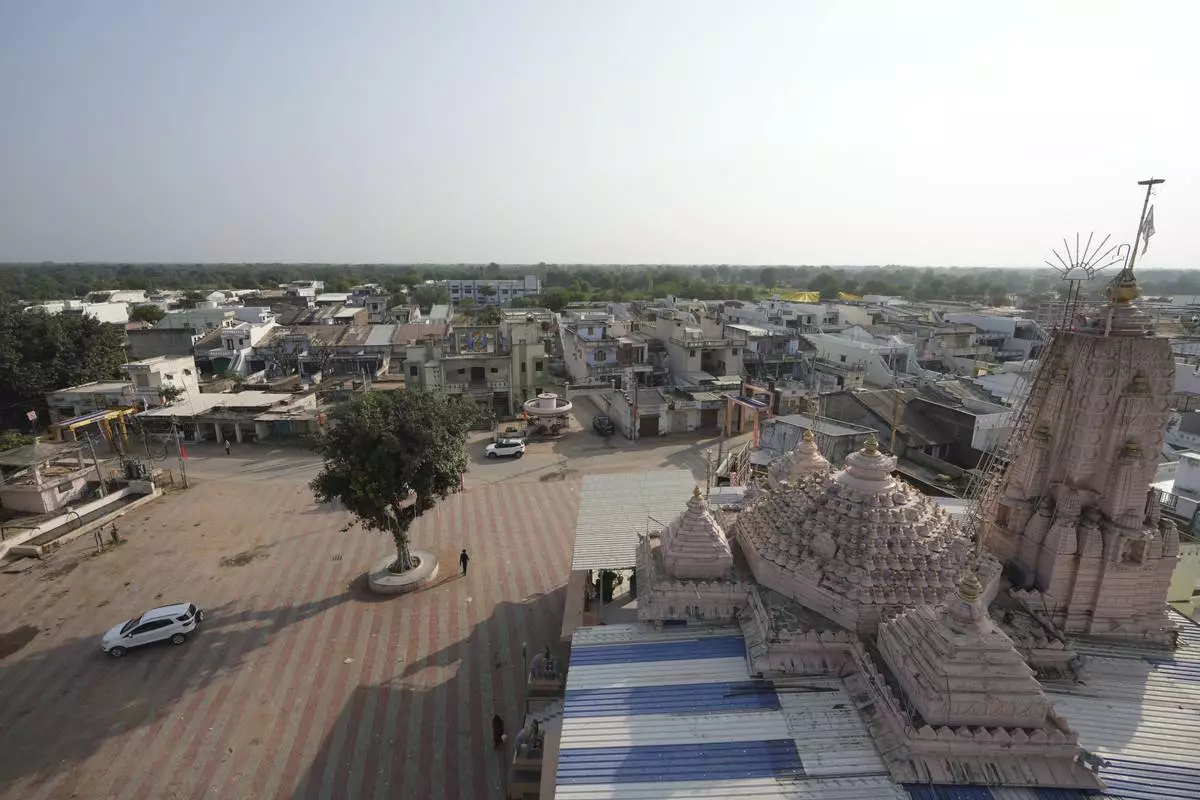
An aerial view of Dingucha village in Gandhinagar, India, Tuesday, Nov. 12, 2024. (AP Photo/Ajit Solanki)
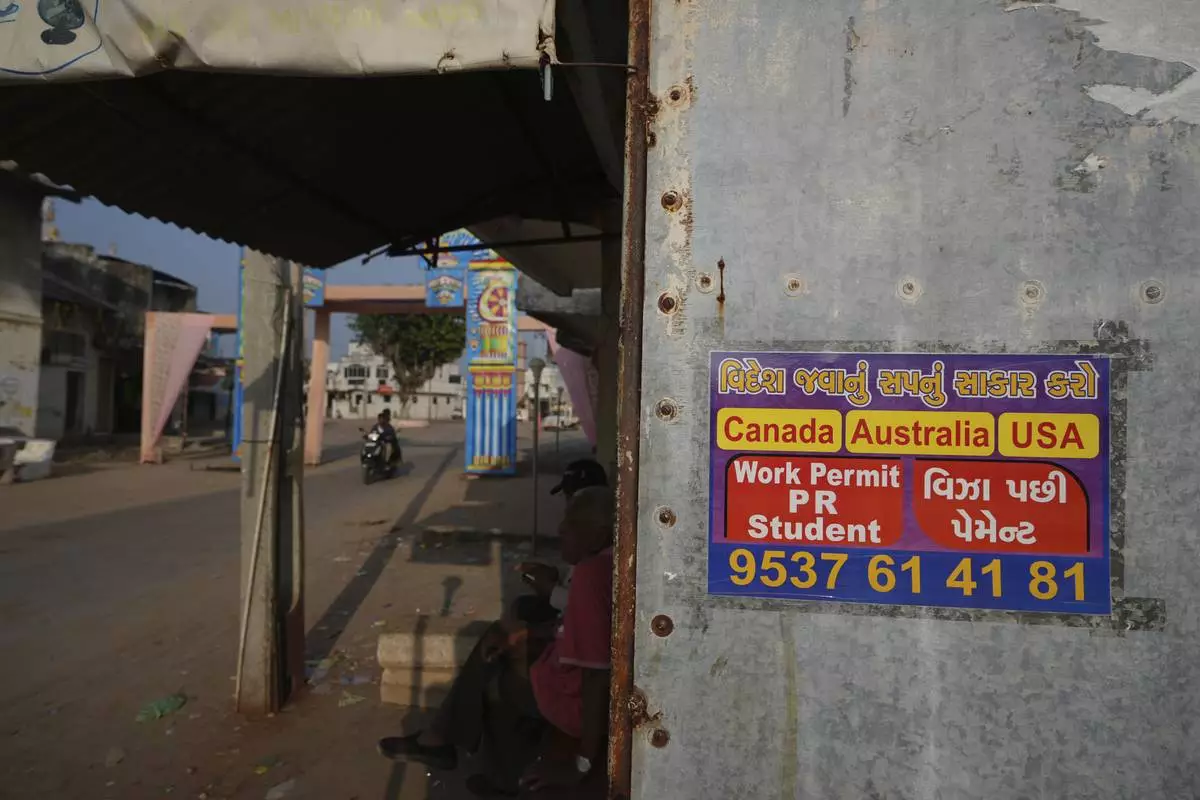
An advertising poster pasted on a shop at Dingucha village in Gandhinagar, India, Tuesday, Nov. 12, 2024. Poster reads in Gujarati "Make your dream of going abroad come true", on top and "Payment after visa". (AP Photo/Ajit Solanki)
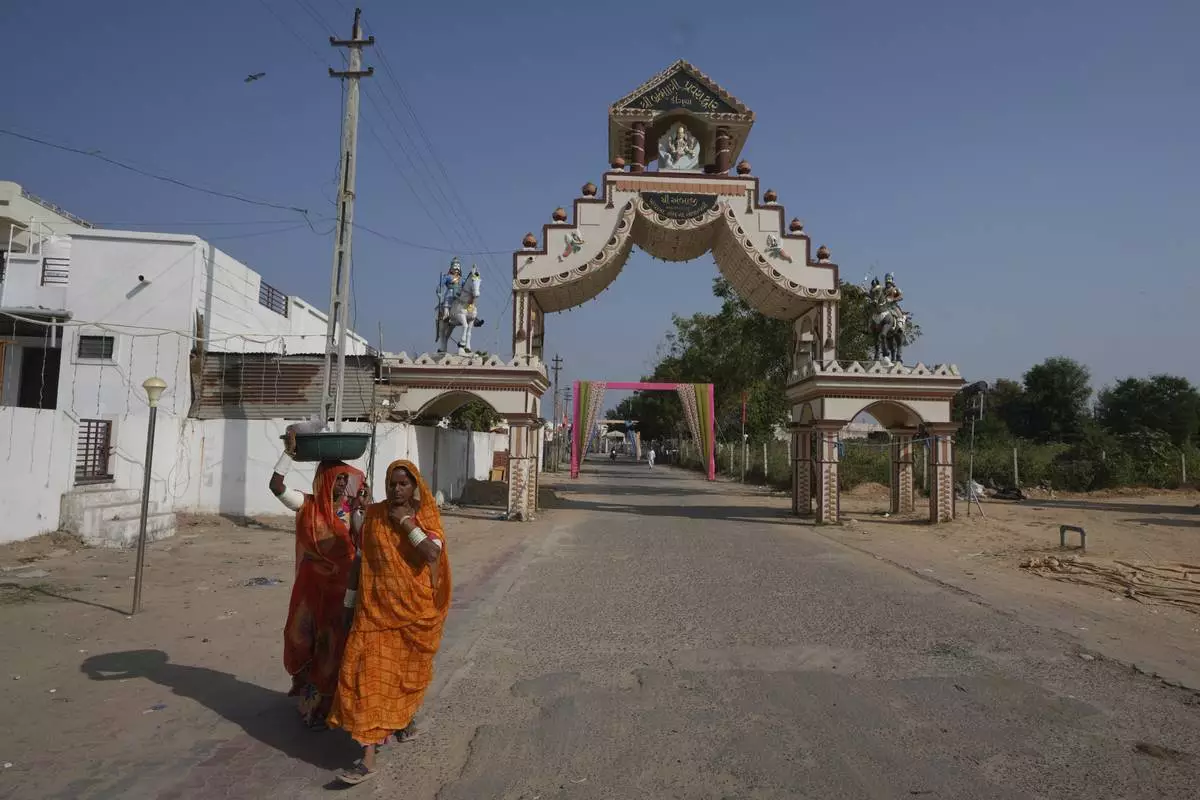
Women walks past an entrance gate of Dingucha village in Gandhinagar, India, Tuesday, Nov. 12, 2024. (AP Photo/Ajit Solanki)
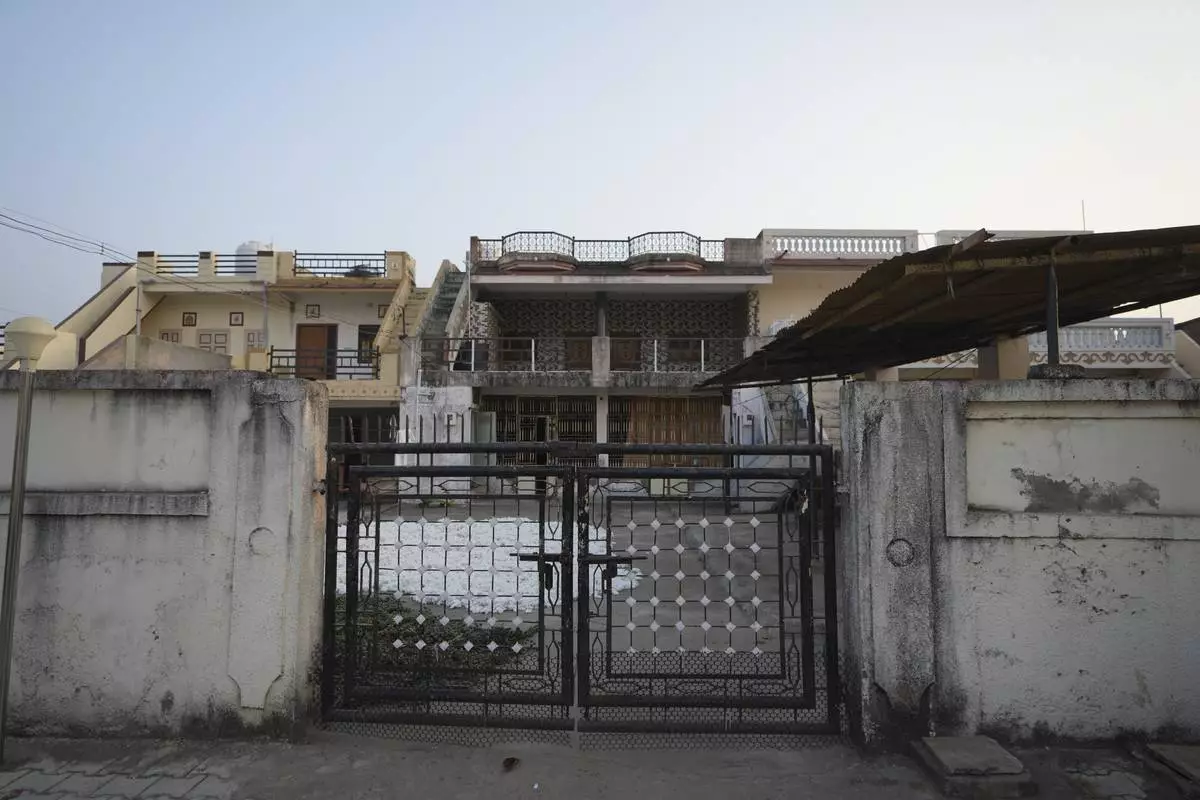
House of Baldevbhai Patel, father of Jagdish Patel, who froze to death with his wife, son and daughter, in their bid to cross over to the United States from the Canada border, at Dingucha village in Gandhinagar district of Gujarat state, India, Tuesday, Nov. 12, 2024. (AP Photo/Ajit Solanki)
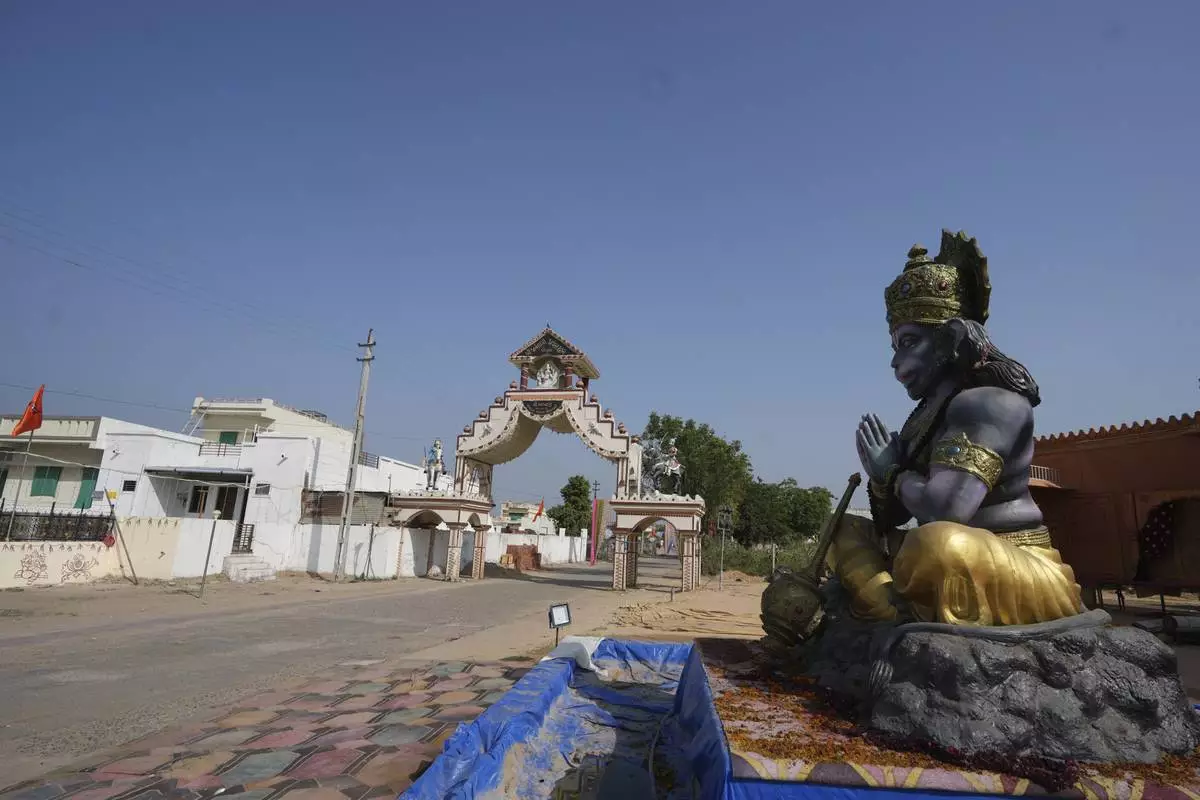
A statue of Monkey God Hanuman, installed as part of a religious celebrations, is seen in front of an entrance gate of Dingucha village in Gandhinagar, India, Tuesday, Nov. 12, 2024. (AP Photo/Ajit Solanki)
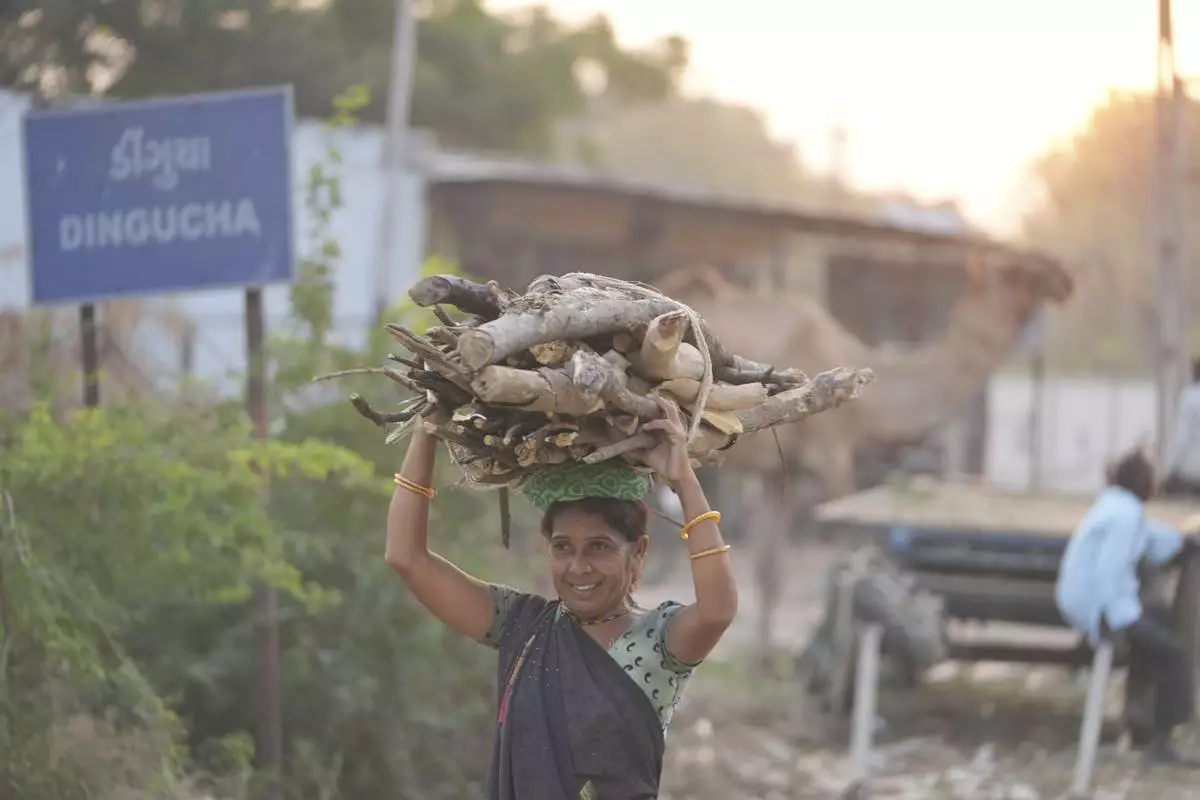
A woman carries firewood on her head at Dingucha village in Gandhinagar district of Gujarat state, India, Tuesday, Nov. 12, 2024. (AP Photo/Ajit Solanki)

A car moves past a signage of Dingucha village in Gandhinagar, India, Tuesday, Nov. 12, 2024. (AP Photo/Ajit Solanki)

This combination image shows left to right; undated photo released by the Sherburne County Sheriff’s Office shows Harshkumar Patel in Elk River, Minn., and undated photo released by the U.S. Immigration and Customs Enforcement shows Steve Shand. (AP Photo)
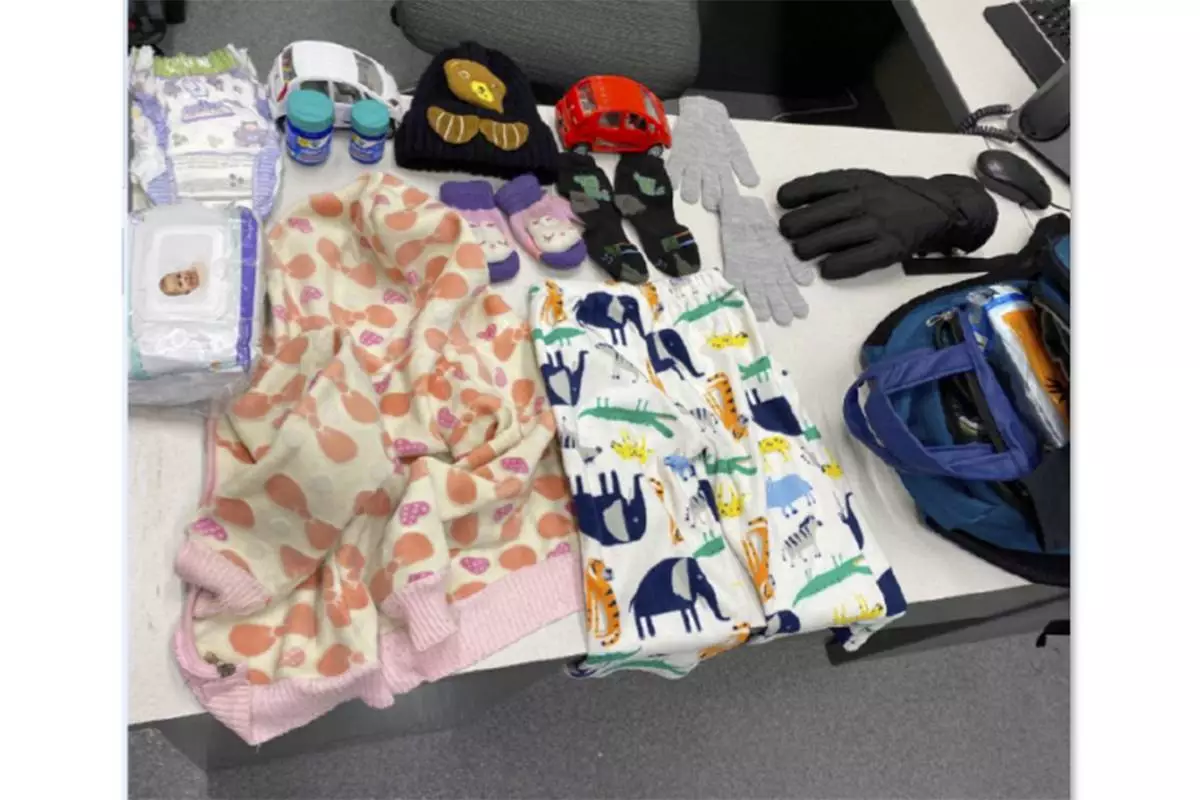
In an undated image released by the U.S. Attorney’s Office, shows items found in a migrant child’s backpack. (U.S. Attorney's Office via AP)
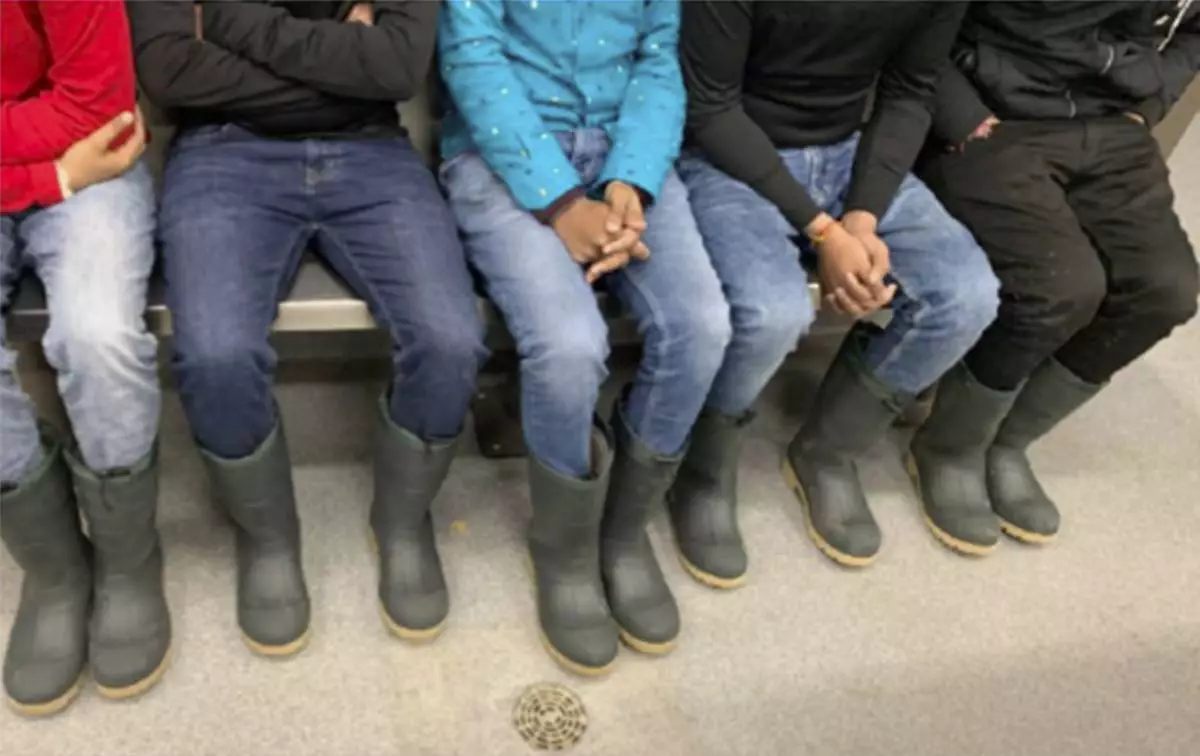
In an image released by the U.S. Attorney’s Office, shows how the migrants who survived the crossing were terribly inadequately dressed. (U.S. Attorney's Office via AP)
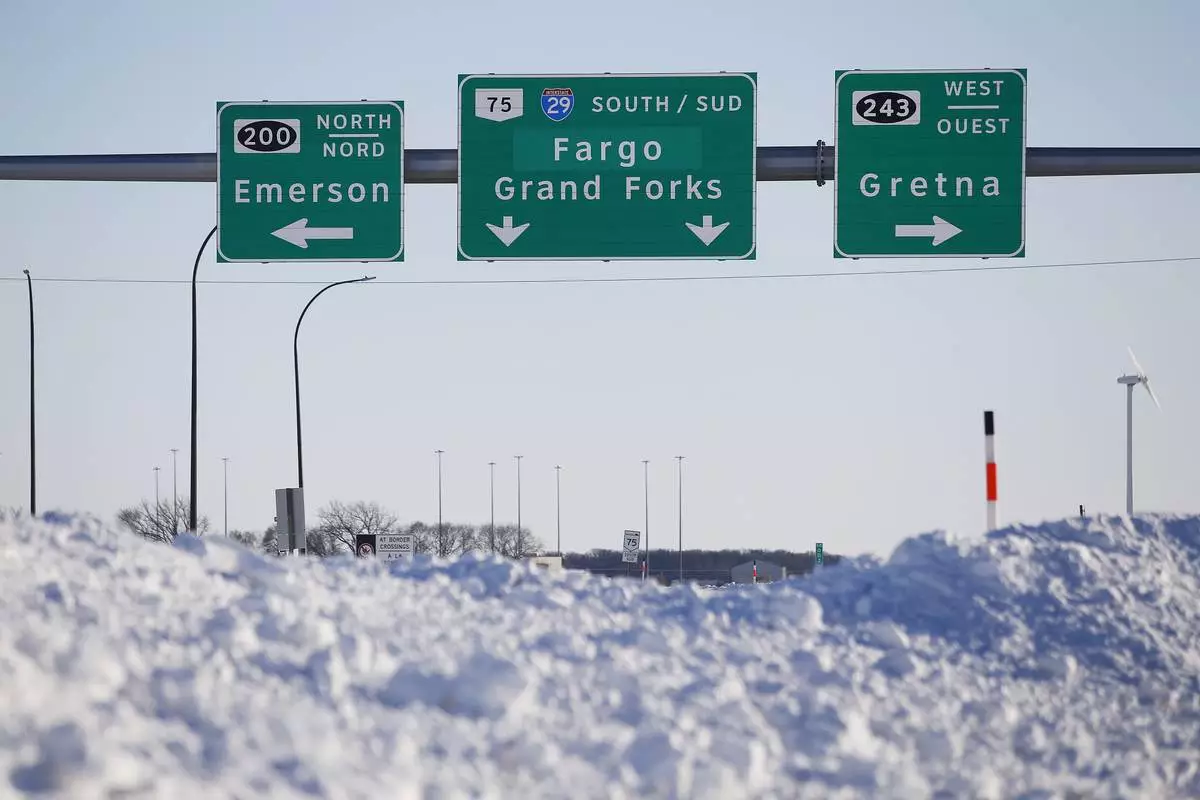
FILE - Road signage is posted just outside of Emerson, Manitoba, Jan. 20, 2022. (John Woods/The Canadian Press via AP, File)
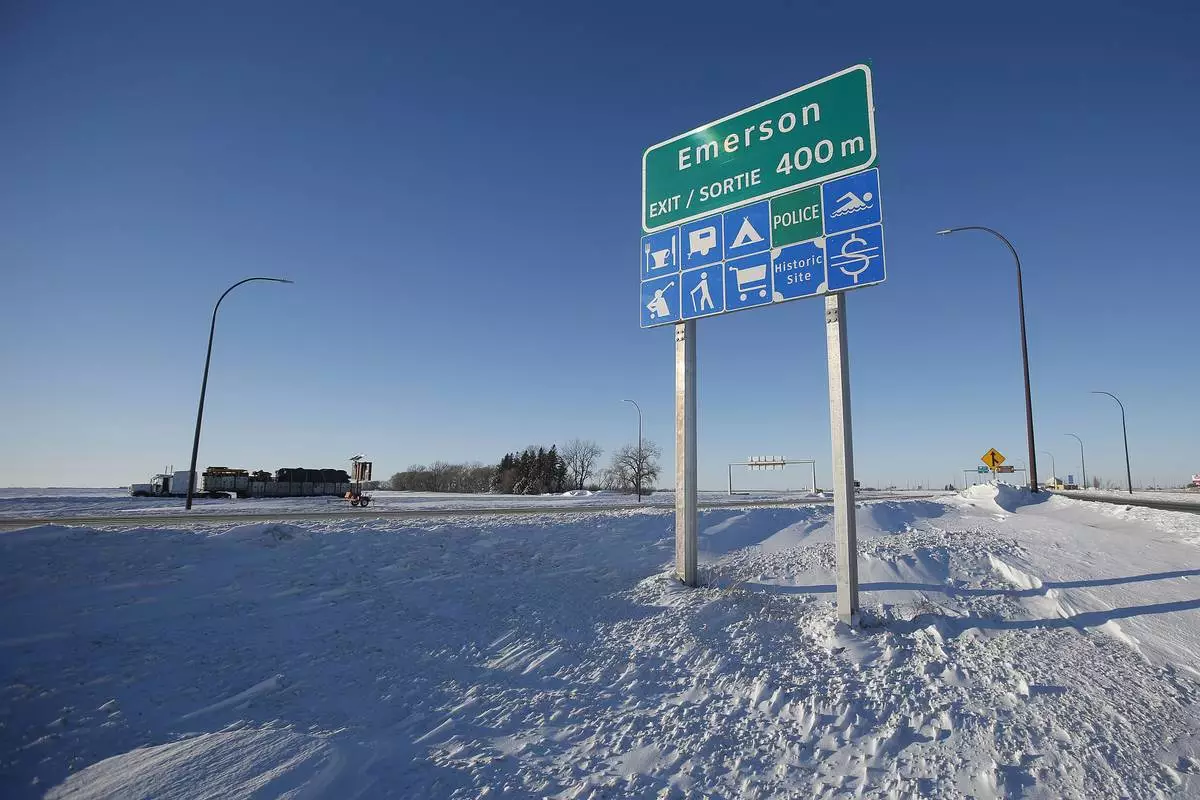
FILE - Road signage is posted just outside of Emerson, Manitoba on Thursday, Jan. 20, 2022. (John Woods/The Canadian Press via AP)
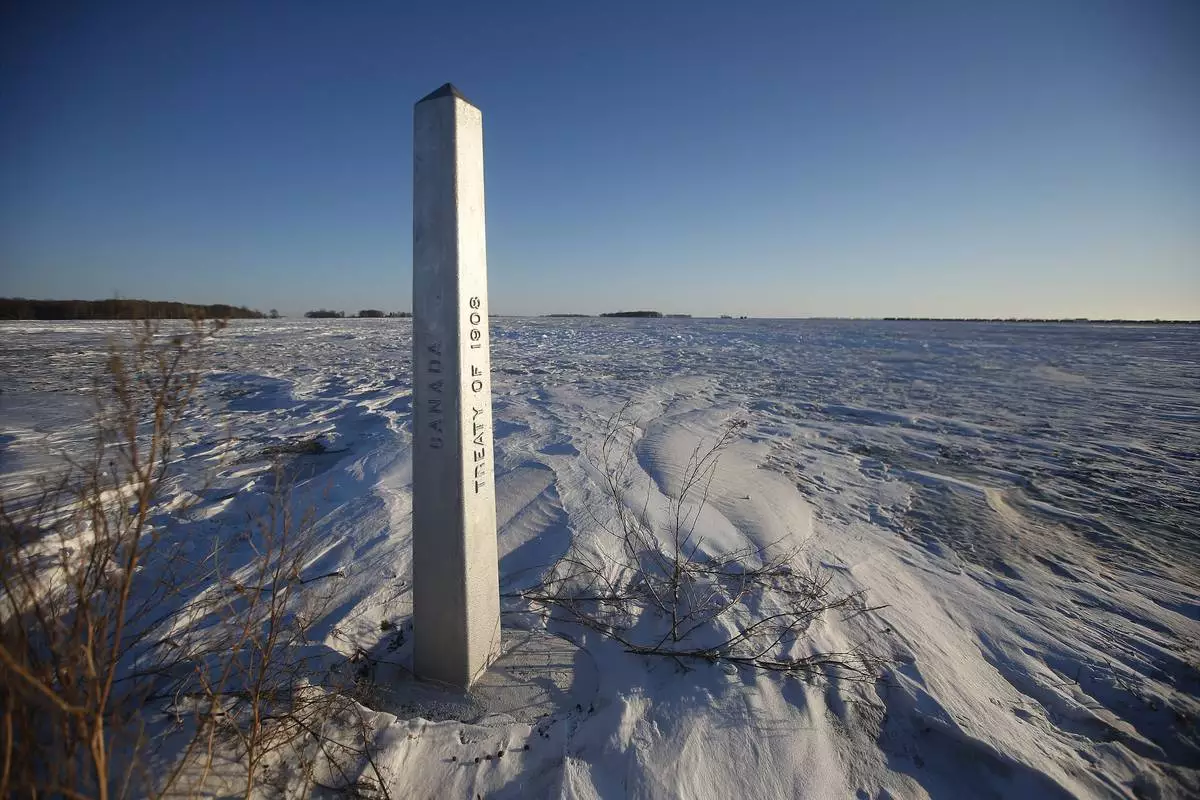
FILE - A border marker, between the United States and Canada is shown just outside of Emerson, Manitoba, on Thursday, Jan. 20, 2022. (John Woods/The Canadian Press via AP, File)





